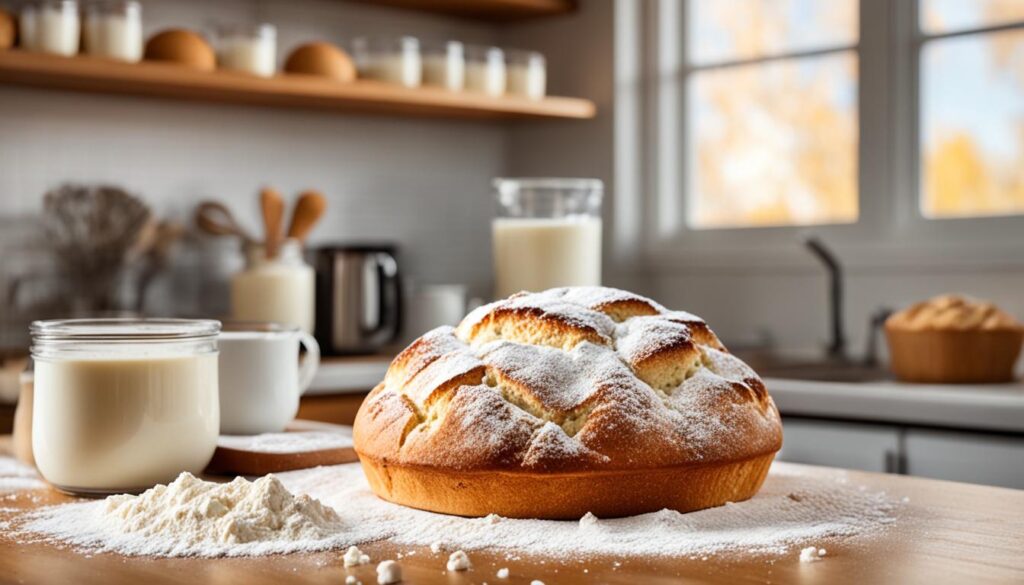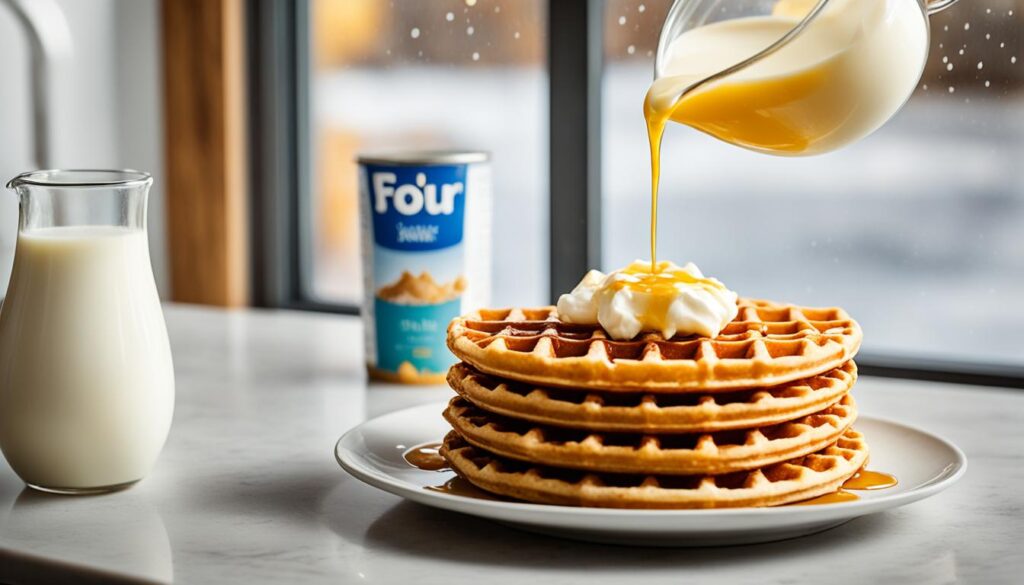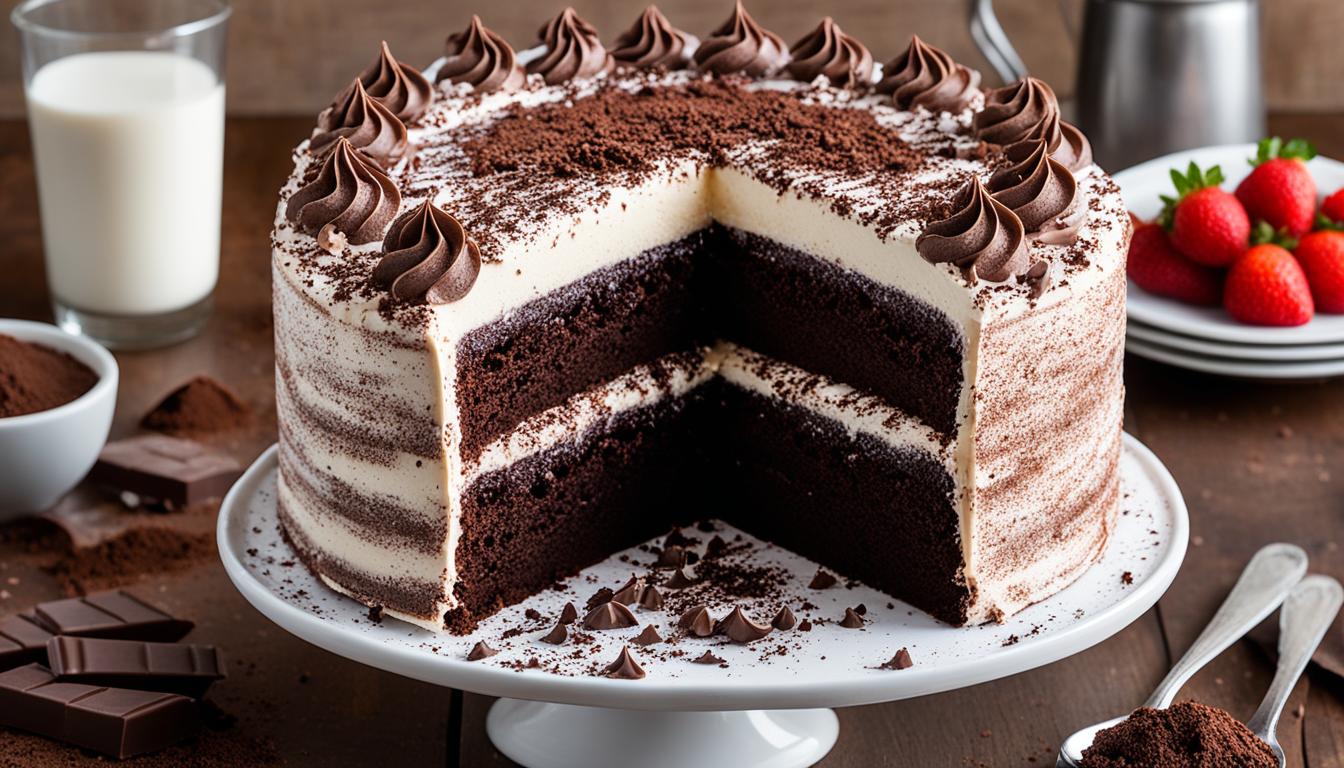Welcome to our article on baking with skim milk! If you’ve ever wondered whether it’s okay to use skim milk in your recipes, you’ve come to the right place. In this article, we’ll explore the use of skim milk in various baking recipes and whether it can be a suitable substitute for whole milk. So, let’s dive in and find out if baking with skim milk is a good idea.
The Role of Fat in Baking
Fat plays a crucial role in the process of baking, contributing to both the texture and flavor of the final product. It acts as a tenderizer, moisturizer, and binder, working together with other ingredients to create a delightful culinary experience.
When it comes to the role of fat in baking, it’s important to understand that the fat content in milk is not the main factor that determines the success of a recipe. While milk does contain some fat, other ingredients such as butter, cream, and egg yolks typically provide more significant amounts. Therefore, substituting skim milk for whole milk in baking recipes does not have a significant impact on the final outcome.
“Fat plays a crucial role in the process of baking, contributing to both the texture and flavor of the final product.”
In most baking recipes, whole milk is used to add moisture and contribute to the overall richness of the baked goods. However, the fat content in milk is just one component among many, and the specific fat content in milk for baking is not a critical factor.
In most baking recipes, the fat content in milk is not the primary source of fat, as other ingredients such as butter, cream, and egg yolks provide more significant amounts of fat.
It’s worth noting that certain recipes, such as those that rely on the fat and flavor of whole milk, may be affected by using skim milk as a substitute. However, for most general-purpose baking recipes, the difference between whole and skim milk is minimal, and using skim milk will not notably alter the outcome.
The Moisturizing Power of Fat
One of the key functions of fat in baking is its ability to moisturize and enrich the texture of baked goods. Fat coats the proteins and starches in the dough or batter, creating a barrier that prevents excessive gluten development and helps retain moisture. This results in a tender, moist crumb and a pleasant mouthfeel.
Texture and Crumb Development
Fat also contributes to the overall texture and crumb structure of baked goods. When incorporated into the dough or batter, fat helps to trap air bubbles, resulting in a lighter, more delicate product. It enhances the volume and provides a finer, more even crumb.
“Fat coats the proteins and starches in the dough or batter, creating a barrier that prevents excessive gluten development and helps retain moisture.”
While fat is an important component in baking, it’s crucial to remember that it is not the sole determining factor of a successful recipe. The interplay of various ingredients, including flour, sugar, leavening agents, and flavor enhancers, all contribute to the final result.
In conclusion, while the role of fat in baking is significant, the fat content in milk is not the primary source of fat in most recipes. Skim milk can be used as a substitute for whole milk in many baking recipes without significantly impacting the texture or flavor of the finished product.
Effects of Skim Milk on Chocolate Desserts
When it comes to chocolate desserts, using skim milk can have a noticeable impact on both the flavor and the overall experience. The absence of fat in skim milk allows the chocolate’s flavor to shine through, resulting in a darker and more intense taste. This makes it a fantastic choice for recipes like double-chocolate cream pie, homemade fudgsicles, and pudding pops.
In these recipes, using skim milk reduces the overall quantity of milk solids. This reduction, in turn, intensifies the chocolate flavor, providing a more pronounced and satisfying taste. The result is a chocolate dessert that is rich, decadent, and impossible to resist.
But it’s not just the flavor that benefits when using skim milk in chocolate recipes. Skim milk also gives these desserts a lighter consistency, making them more refreshing and enjoyable. Whether in the form of a silky-smooth chocolate pie or a frozen treat on a hot summer day, the use of skim milk adds a delightful touch to any chocolate dessert.
Skim Milk in Bread and Muffins
Skim milk can be successfully used in bread and muffin recipes without compromising the texture or taste. Whether you use skim milk or whole milk, both provide similar amounts of lactose, which contributes to browning and flavor development during baking. The primary role of milk in these recipes is to provide hydration and facilitate gluten development. Therefore, you can use whichever type of milk you have on hand without affecting the final result.
When baking bread and muffins, the choice of milk does not significantly impact the overall outcome. The key factors in achieving the desired texture and taste are proper hydration and gluten development. Skim milk fulfills these requirements just as effectively as whole milk.
Using skim milk in bread and muffins is particularly beneficial for those looking to reduce the fat content in their baked goods without sacrificing flavor. Skim milk contains no fat, so it can be a healthier option for individuals watching their fat intake.
“Skim milk is a versatile ingredient that can easily substitute whole milk in bread and muffin recipes, giving you a lighter, healthier alternative without compromising on taste or texture.”
For those who prefer a lighter, less dense bread or muffin, using skim milk can produce a result with a slightly lighter crumb. This can be ideal for recipes such as banana nut bread or blueberry muffins, where a lighter texture complements the fruit or nut elements.
Comparison of Whole Milk and Skim Milk in Bread and Muffin Recipes
| Aspect | Whole Milk | Skim Milk |
|---|---|---|
| Taste | Subtle richness | Lighter, more neutral |
| Texture | Moist and slightly denser | Moist with a slightly lighter crumb |
| Fat Content | 1-2% | 0% |
| Nutritional Benefits | Calcium, Vitamin D, and fat-soluble vitamins | Calcium and Vitamin D |
As shown in the table above, the differences between whole milk and skim milk in bread and muffin recipes are minimal. Skim milk provides the same hydration, facilitation of gluten development, and overall structure as whole milk. The small variations in taste and texture can be subtle and may not be noticeable in many recipes.
In summary, baking with skim milk is a viable option for bread and muffin recipes. It offers a lighter alternative without compromising on taste or texture. So, feel free to substitute skim milk in your favorite bread and muffin recipes, allowing you to tailor the fat content of your baked goods to your dietary preferences and needs.

Skim Milk in Yeast-Raised Waffles
When it comes to baking yeast-raised waffles, you might wonder if using skim milk instead of whole milk will affect the final taste and texture. The good news is that you can confidently substitute skim milk in your waffle recipes without compromising on deliciousness.
The key to achieving tender and rich yeast-raised waffles lies in the addition of brown butter. The brown butter provides a nutty flavor and adds moisture to the waffle batter. In this recipe, the milk acts as a delivery system for water and lactose, enhancing the overall texture.
Whether you choose to use skim milk or whole milk, both options will yield chewy and flavorful waffles. The fat content of the milk is not a significant factor in this type of recipe, as the brown butter already contributes to the richness.
So go ahead and give it a try! Enjoy light and fluffy yeast-raised waffles using skim milk in your favorite recipes.

| Ingredient | Quantity |
|---|---|
| All-purpose flour | 2 cups |
| Instant yeast | 2 teaspoons |
| Sugar | 2 tablespoons |
| Salt | 1/2 teaspoon |
| Skim milk | 1 cup |
| Brown butter, melted | 1/4 cup |
| Eggs | 2 |
| Vanilla extract | 1 teaspoon |
Skim Milk in Sweet Potato Pie
When it comes to baking a delicious sweet potato pie, you might wonder if using skim milk will have an impact on its richness and flavor. The good news is that you can confidently substitute skim milk in your sweet potato pie recipe without significantly altering its taste or texture.
During the reduction stage of the recipe, the flavors of the sweet potatoes intensify, bringing out toasty toffee notes that are developed regardless of whether you use skim milk or whole milk. This means that the essential flavors of the pie will shine through, even with the use of skim milk.
While skim milk may have a slightly lower fat content compared to whole milk, it’s important to note that sweet potato pie contains other ingredients that contribute to its richness. Whole eggs and heavy cream are often included in the recipe, ensuring that the pie remains luscious and full-bodied.
Comparison: Sweet Potato Pie with Skim Milk vs. Whole Milk
| Ingredient | Skim Milk | Whole Milk |
|---|---|---|
| Sweet Potato Flavor | Intriguingly intense | Intriguingly intense |
| Richness | Deliciously satisfying | Deliciously satisfying |
| Texture | Smooth and creamy | Smooth and creamy |
| Taste | Indulgent and flavorful | Indulgent and flavorful |
As you can see from the comparison table, both versions of sweet potato pie, made with skim milk or whole milk, offer similarly delicious results. The use of skim milk does not compromise the pie’s richness or overall taste. So go ahead and feel confident in using skim milk when baking your next sweet potato pie!
Skim Milk in Blueberry Muffins
Skim milk can be used in blueberry muffin recipes without impacting their moisture or structure. The primary role of milk in these muffins is to provide hydration and facilitate gluten development. Whether you use whole milk or skim milk, you will achieve the same benefits. The richness in these muffins comes from the addition of butter, rather than the fat content of the milk.
Blueberry muffins are a breakfast staple that can be enjoyed any time of the day. They are known for their moist texture and burst of tangy sweetness from the blueberries. By substituting skim milk for whole milk, you can create a lighter version of this classic treat without compromising its taste or quality.
The amount of milk used in blueberry muffin recipes is relatively small compared to other ingredients like flour, sugar, and butter. It primarily serves as a hydrating agent, keeping the batter moist and allowing the gluten in the flour to develop, resulting in a tender crumb.
Skim milk provides the same hydration and gluten development as whole milk, making it a suitable substitute in muffin recipes. You won’t notice any significant difference in the texture or structure of the muffins when using skim milk.
The real source of richness and flavor in blueberry muffins comes from the addition of butter. Butter adds a lusciousness to the muffins and enhances the overall taste. The fat content in whole milk is minimal compared to the amount of butter used in the recipe. So, whether you use skim milk or whole milk, the resulting muffins will have the same level of richness.
When baking with skim milk in blueberry muffins, you can enjoy a lighter and healthier version without sacrificing on taste or texture. So go ahead and give it a try! Your muffins will still be moist, delicious, and bursting with blueberry goodness.
Skim Milk in Butterscotch Pudding
When it comes to making butterscotch pudding, using skim milk is a viable option that doesn’t compromise its creaminess. You can enjoy a delicious and satisfying dessert while reducing the fat content. By incorporating ingredients like malted milk powder, egg yolks, and white chocolate, you can still achieve the desired richness in your butterscotch pudding.
Skim milk, with its lighter consistency, can even mimic the texture of stovetop Jell-O pudding. This makes it an excellent choice for those who prefer a lighter-bodied dessert without sacrificing flavor. The fat content of the milk is not a pivotal factor in creating a delectable butterscotch pudding. Instead, it’s the combination of carefully selected ingredients that contributes to the final result.
So, if you’re looking to substitute skim milk in your pudding recipes, go ahead and give it a try. You can confidently bake your butterscotch pudding using skim milk, knowing that the creaminess and taste won’t be compromised. Feel free to indulge in this delightful dessert while making a conscious choice towards a healthier and lighter option.
